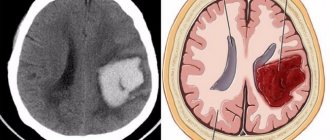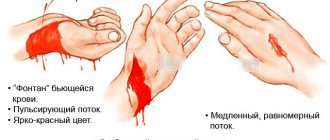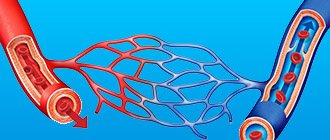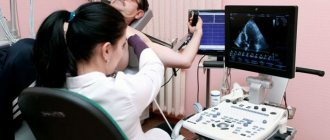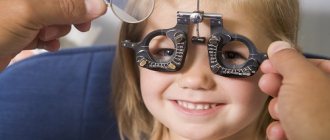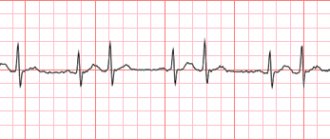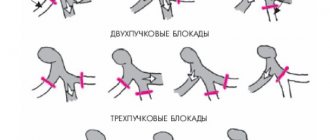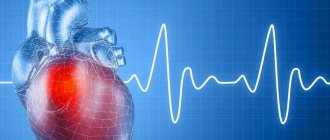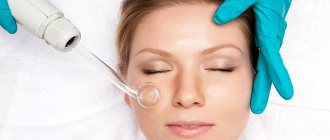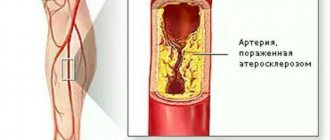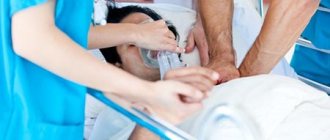Neurocirculatory dystonia syndrome is increasingly common both among young people and among those who are no longer twenty years old.
According to statistics, 80% of the population suffers from it, however, symptoms of VSD appear in only a third . What is vegetative-vascular dystonia syndrome?
According to scientists, VSD is not a disease. But one can argue with this.
According to doctors, this is just a set of clinical symptoms that arise due to malfunctions of the ANS.
Exactly what signs of neurocirculatory dystonia syndrome will appear in a patient depend on which part of his ANS is affected (parasympathetic or sympathetic).
VSD is a set of clinical symptoms that arise as a result of disruption of the human autonomic nervous system
Attack of VSD
Neurocirculatory dystonia syndrome can be asymptomatic.
A person may not even be aware of its presence, however, under the influence of certain factors, VSD syndrome can notify a person of its existence in the brightest colors.
Thus, the patient may begin to sweat in his extremities, experience headaches and heart pain, and experience nausea and vomiting.
All these signs indicate that a person has had an attack of vegetative-vascular dystonia.
Treatment
As a rule, VSD is treated by adjusting the patient’s emotional state and normalizing blood pressure. In order to relieve emotional stress, the doctor prescribes sedatives to the person. These may be homeopathic medicines:
- motherwort;
- valerian;
- Chinese lemongrass;
- ginseng tincture;
- tincture of Eleutherococcus.
A patient with vegetative-vascular dystonia is recommended to exercise. Ideal types of physical activity are running, walking, yoga, breathing exercises, cycling, and cardio exercises. It is advisable to take a contrast shower every morning.
The main insidiousness of attacks of dystonia is that a person constantly waits with fear for the next paroxysms. And this is the cause of frequent panic states and attacks. Therefore, initially a person with VSD needs to try to stabilize his emotional and mental state. A healthy lifestyle and normal emotional background help reduce the frequency and duration of VSD attacks.
Pathogenesis of VSD crisis
Failure in the ANS can occur due to:
- birth injuries;
- stress;
- concussions;
- smoking and alcohol abuse;
- improper lifestyle;
- neurological diseases;
- hormonal changes in the body;
- sudden change in weather;
- genetic predisposition;
- emotional overload;
- endocrine diseases;
- spinal injuries.
VSD occurs for various reasons, including due to poor lifestyle, overwork, and physical fatigue
Causes of VSD
Of course, VSD, like any other problem, has its reasons. Typically they consist of the following factors:
- heredity;
- traumatic brain injuries;
- birth injury;
- problems with the endocrine system;
- regular psycho-emotional overload;
- state of stress;
- alcohol abuse, smoking, drug use.
There is always a factor that triggers the first attack in VSD. Such a factor may be stress, excessive physical activity, change of environment, surgery or other medical intervention, or the use of potent medications.
Classification of attacks of neurocirculatory dystonia:
A malfunction of the ANS sections manifests itself in a disruption in the secretion of hormones, mediators, adrenal glands, and other glands.
Because of this, all the symptoms of VSD crises arise.
Depending on where the failure occurred, there are:
| Type of crisis of vegetative-vascular dystonia | How does it manifest itself? |
| Vagoinsular | The functioning of the parasympathetic department is disrupted. A significant amount of insulin enters the blood, while sugar levels drop sharply. First, the patient begins to feel a general weakness of the body. Then he becomes dizzy and nauseous, and begins to feel short of breath. Blood pressure decreases and heart rate becomes lower. The patient begins to sweat heavily. He may vomit. |
| Vegetative-vestibular | The person may also begin to experience dizziness and nausea. Its main difference from the previous attack of neurocirculatory dystonia is that during it, surges in blood pressure may begin to occur, which can either sharply increase or decrease. |
| Sympatho-adrenal | Due to a malfunction in the sympathetic department, adrenaline begins to enter the blood quickly and in large quantities. During this VSD crisis, the symptoms are as follows: pain in the heart area, rapid pulse, headaches, high blood pressure, chills. In addition, during this attack the patient experiences strange excitement, a feeling of anxiety, restlessness, and a feeling of numbness in the limbs. |
| Hyperventilation | The patient begins to lack air, which is why he begins to breathe more often. He develops tachycardia, blood pressure rises, and the muscles of the feet, forearms, legs, and hands become tense. |
In addition, attacks of VSD are:
- hypertensive. Its symptoms are as follows: high blood pressure (about 140-180 mmHg), rapid pulse (about 110-140 beats per minute), throbbing headaches, high temperature (38-39 degrees), chest pain, the presence of incomprehensible excitement;
- hypotensive. During this attack, blood pressure drops to 90-50 mm. rt. Art., the pulse becomes less frequent 45-50 beats per minute . Weakness also appears throughout the body, there is a feeling of lack of air, suffocation. Pain appears in the abdomen and heart; hot flashes come to the head; nausea, vomiting, and dizziness occur. Possible loss of consciousness during an attack;
- cardiological During this, the patient begins to lack oxygen . He develops pain in the sternum, his heart rhythm becomes erratic, and his heartbeat stops; Arrhythmia may occur. It begins to seem to him that his heart vessels will soon burst.
It is important to know how to relieve an attack of VSD.
During any of the above-described crises of neurocirculatory dystonia, the patient may develop a panic attack.
In a severe form of vascular dystonia, a mental disorder of the personality may even occur, as well as a fear of death, however, after the end of the VSD crisis, all these symptoms disappear.
Since an attack can occur at any time, friends of a person suffering from neurocirculatory dystonia need to know how to properly assist him with VSD.
Symptoms
Each person experiences symptoms of an attack differently. It is possible that one symptom will be felt very clearly and another not, if at all. As we have already learned, much depends on the severity of the crisis. So, how can an attack of VSD manifest itself?
Pain. It can be localized in the area of the heart, where dull compression will be felt. Pain sensations can spread to the left arm, more precisely under the shoulder blade and on the forearm. In addition to dull compression, there may be tingling in the same area. They can be sharp and pass quickly. If a previous examination did not reveal any heart problems, then the listed condition will indicate precisely the onset of an attack, which indicates that our life engine is overloaded physically or psychologically and it is time to give it a rest.
Headaches can follow one after another and occur several times a day. This can last for several months, then a break for about six months, and then everything starts in a new circle. In the first ten minutes it appears along with a headache and the following condition occurs:
- facial redness;
- redness of the eyes, tearing;
- sweating;
- drooping eyelid.
This condition is often observed in males who belong to the age group of 20 to 30 years, especially if they have bad habits such as smoking and alcohol abuse.
- Feeling short of air.
- Feeling of a strong heartbeat.
- Shaking.
- Nausea.
- Decreased or increased blood pressure.
- Weakness.
- Dizziness.
- Deterioration of vision and hearing.
- Fainting.
These signs are especially observed in hot weather. This is how a person begins to have a panic attack. What it is?
This is an attack of a very strong nature, when a person’s feeling of fear increases and panic begins. This is a very clear manifestation of VSD, which develops at lightning speed, literally within a couple of minutes and lasts for a couple of hours. The duration of such an attack is explained by the fact that fear hormones begin to participate in the process. The symptoms are the same as we have already listed, but there are additional ones.
- panic;
- fear of death;
- irritability;
- increased fatigue;
- sleep disturbance;
- increase in body temperature.
Duration of crises
How long an attack of VSD will last depends on its severity.
So, if it is a mild crisis, then its duration will be approximately 15 minutes.
During such an attack of vegetative-vascular dystonia, symptoms practically do not manifest themselves at all.
There is no asthenia after it.
If the patient has a crisis of moderate severity, it will last at least an hour.
With such an attack of VSD, the symptoms cannot go unnoticed.
There are a lot of them. Plus, immediately after the crisis, asthenia begins. Its duration is 24-36 hours.
The duration of a severe crisis is even longer and there are more symptoms. The duration of asthenia that begins after a VSD crisis is several days.
Quite often, after a crisis, asthenia begins - a feeling of powerlessness, excessive fatigue, apathy
Vegetative crisis - consequences
A vegetative crisis, accompanied by physical and psycho-emotional symptoms, can appear in any patient with vegetative-vascular dystonia.
Attacks of VSD can occur in people only once in their lives, but if they are repeated, the patient is diagnosed with vegetative-vascular dystonia with a crisis course - this is the most severe form of pathology, which can lead to a lot of unpleasant consequences of a psycho-emotional, social and physical nature. Therefore, it is important to start treatment after the first time.
In general, vegetative crisis in the latest revision of the international classification of diseases is referred to as a panic attack or panic disorder, but in a broader sense. When the term “vegetative crisis” is used to describe the type or form of vegetative-vascular dystonia, it rather means “an attack of VSD” during an exacerbation of the pathology.
Be careful!
We would like to warn you in advance. It is important to remember that most medications offered for panic attacks and VSD are antidepressants and tranquilizers, the safety and effectiveness of which have not been fully studied. Therefore, it is strongly recommended to resort to the safest means first, such as herbal remedies.
Each of us knows that the effect of medicinal herbs is much more effective than various types of chemicals offered by pharmaceuticals today.
Among the many different offers, we especially highlight the Monastic Collection - which is a full-fledged medical complex that not only eliminates diseases, but also supplies the body with useful microelements and vitamins.
It can be used as both a primary and an auxiliary remedy to get rid of a wide variety of ailments.
And don’t forget about such important things as proper nutrition, sports, breathing exercises, which together with herbs will give the greatest effect.
First aid for VSD
People who have been diagnosed with vascular dystonia should know how to quickly relieve an attack of VSD.
You need to be able to cope with it yourself, since it can happen suddenly and there may be no one nearby.
What to do during an attack of VSD:
- First you need to try to calm down . You should not think about death because of the alarming symptoms that appear. It is necessary to understand that this is just a crisis of VSD; after a while they will disappear.
- Then you need to unfasten your tight clothes and, if possible, go out into the air . This must be done to ensure the supply of oxygen to the lungs. It is recommended to drink a sedative. For example, tincture of peony, motherwort, Chinese lemongrass, valerian. They should be used as follows: 50 grams of tincture should be dissolved in half a glass of boiled water.
- If you don’t have the strength to go out into the air on your own, then you need to open a window in the room . After this, you should lie on your back and raise your legs. This will improve the flow of blood to the head.
- If someone is nearby, then their first aid for vegetative-vascular dystonia should be to sprinkle the patient’s face with cold water . If the latter begins to lose consciousness, then he should give him ammonia to sniff. If this is not available, use cologne or alcohol.
- Then you can drink the same Valocordin or Corvalol .
- If you have high blood pressure, you need to take a pill that should help lower it. If your blood pressure is low, you will need to take a medicine that will raise it.
- You can drink strong sweet tea or coffee.
- Immerse your feet in warm water.
- To calm your heartbeat, apply pressure to your eyeballs.
So, we found out how to relieve an attack of vegetative-vascular dystonia.
But how can you prevent the development of this condition?
What to do with VSD is not recommended by doctors:
- drink large quantities of alcoholic beverages, smoke;
- go on diets that require almost complete abstinence from food;
- watch films and TV series that contain scenes of violence;
- prepare yourself for the onset of a crisis;
- spend little time outdoors, a lot at the computer or TV;
- drink large amounts of coffee or energy drinks;
- engage in extreme sports.
First you need to try to just calm down
How to cope with an attack on your own
How to relieve an attack of vegetative-vascular dystonia? Doctors recommend not only visiting a psychologist who will help overcome part of the problem, but also making independent efforts to adequately respond to each subsequent attack of dystonia. Negative emotions such as fear, anxiety, panic and a feeling of powerlessness only make each attack more frequent and worse.
If the crisis began at home, you need to do everything possible to ease its manifestation. First of all, it is recommended to open the window, filling the room with fresh air. It has a positive effect on the functioning of the nervous system and the entire body as a whole.
To ensure uninterrupted blood circulation, you should take a lying position and raise your legs. Once the attack has begun, care must also be taken to keep the entire body and especially the limbs completely warm.
If these measures do not bring the expected effect, it is recommended to pour hot water into a small container and immerse your feet in it. The water should cover your ankles. Sedative medications will help suppress symptoms. Corvalol or Valocordin are considered fast-acting under such circumstances (only twenty drops diluted with a small amount of water are enough). An alternative is to use half a Gidazepam tablet, which is placed under the tongue.
What to do with vegetative-vascular dystonia?
Treatment for VSD syndrome should be prescribed by a doctor.
You should not try to cope with its manifestation on your own.
Treatment of neurocirculatory dystonia includes taking herbal medications.
For example, tinctures of motherwort, ginseng, or valerian.
If the patient has severe neurotic disorders, then he should use mild sedatives and medications that strengthen the nervous system.
To improve blood flow, as well as its circulation in the vessels of the brain, drugs such as Glycine, Piracetam, Ginkgo Bloba, Pantogam, Actovegin can be prescribed.
It is recommended to use them for at least three months.
After completing the entire course, the patient should have improved memory and a reduction in the frequency of migraines and headaches . Symptoms such as forgetfulness, fatigue, and absent-mindedness should disappear. In addition, your general condition should improve.
Spa treatment
Assistance to patients with vegetative-vascular dystonia during sanatorium-resort treatment is carried out on the basis of the integrated use of natural healing resources, physiotherapeutic and medicinal methods. The most effective stay in sanatoriums is during the period of remission (weakening of symptoms) of the disease.
Where is it recommended to conduct sanatorium-resort treatment?
For this disease, it is favorable to visit sanatoriums and resorts located within the climatic zone in which the patient lives permanently, because a sharp change in climate and natural conditions can cause stress and exacerbation of the disease. It has been established that when the time zone changes for more than 3 hours, desynchronosis develops in the body (disturbance of the daily biorhythm). This condition manifests itself as a sleep disorder and a general deterioration in the patient’s well-being. Also, a sharp inversion (reverse) change of seasons has a negative impact on humans. Thus, choosing a sanatorium in a southern country with summer conditions in the fall, the patient risks exacerbating the disease.
The types of resorts that are recommended for vegetative-vascular dystonia are:
- climatic;
- balneological;
- mud therapy
Climatic resorts
The biological impact of climate calms the nervous system and normalizes the functions of vital systems of the body. The most useful types of climatic resorts for vegetative-vascular dystonia are those located in coastal and mountainous areas.
Spa treatment in coastal areas
The healing effect of visiting medical institutions located in coastal areas lies in the healing effects of sea water and air on the body.
Sea air does not contain dust and is saturated with a large number of useful elements. Under the influence of air, metabolism accelerates and the functioning of the circulatory system is activated. Bromine, which is present in large quantities in sea air, strengthens the body’s nervous system and helps normalize the emotional background. Sea water is a source of elements that have a healing effect on patients with vegetative-vascular dystonia.
Substances that are part of sea water and help cure this disease are:
- calcium – normalizes sleep and helps fight depression;
- magnesium – helps fight irritability and nervousness;
- bromine – has a beneficial effect on the nervous system;
- manganese – strengthens the immune system;
- selenium – improves the functioning of the heart and blood vessels;
- iodine – normalizes the functioning of the brain and immune system.
The effects that swimming in sea water has on the body are:
- chemical – useful elements contribute to achieving a healing effect;
- mechanical - the pressure of a large mass of water when swimming is a hydromassage, which helps improve blood circulation;
- physiological - the temperature difference between sea water and the human body helps to increase heat transfer, due to which metabolic processes in the body intensify;
- psychotherapeutic – waves and gentle rocking of water have a calming effect on a person.
Climate treatment in mountain sanatoriums
The mountain climate is characterized by clean air with low oxygen content. Once in the body, such air improves the functionality of the circulatory system. The positive effect of mountain air masses is also due to the large number of negative ions in their composition. The climate in the mountains helps to improve blood composition and activate metabolism, which gives positive results in the treatment of this pathology. Staying outdoors calms the nervous system and has a beneficial effect on the body's immunity.
Procedures carried out at climatic resorts
The basis of treatment carried out at climatic resorts is the dosed effect on the body of climatic factors and special procedures.
The main methods of climatotherapy are:
- heliotherapy - sunbathing;
- hypoxic therapy - treatment with mountain air;
- aerotherapy - exposure to fresh air on a naked (fully or partially) body;
- speleotherapy – visiting karst caves, grottoes, salt mines and mines;
- thalassotherapy - therapeutic procedures using algae, water and other marine products.
Balneological resorts
Balneotherapy is a combination of various water procedures based on medicinal mineral waters. The mechanism of action of treatment procedures is based on the beneficial effects of salts, gases and natural extracts found in water. Various useful elements in mineral waters help normalize the functioning of the circulatory system and improve the functionality of the nervous system. Mineral baths are selected taking into account the characteristics of the disease.
Balneotherapy methods for vegetative-vascular dystonia are:
- showers (fan, circular, underwater, Charcot shower) – help stabilize vascular tone;
- general and individual baths (nitrogen, pine, pearl, oxygen) - have a calming effect;
- contrast mineral baths – improve blood circulation.
The rules for selecting waters for procedures are:
- for hypertensive and cardiac types of disease, radon, hydrogen sulfide, iodine-bromine waters are indicated;
- for hypotensive vegetative-vascular dystonia, procedures using iodine-bromine waters are recommended;
- in case of vasomotor syndrome, the patient is shown hydrogen sulfide and carbon dioxide baths;
- radon and nitrogen baths help with nervous excitement;
- in case of exhaustion, carbon dioxide baths are prescribed;
- for sympathicotonia, treatment based on sulfamide waters is useful.
Mud resorts
Mud therapy includes procedures using therapeutic mud. The healing effect of such treatment is achieved due to the thermal effect and the characteristics of the chemical composition of the mud. The biologically active substances included in their composition have increased penetrating ability and, entering the body through the skin, contribute to the normal functionality of all vital systems.
Mud therapy methods that are recommended for this disease are:
- mud baths;
- local mud applications;
- mud wraps;
- the combined effect of dirt and electric current (dirt electrophoresis).
Attacks of VSD every day?
Crises of neurocirculatory dystonia can occur once a week, every few months, and in some cases every day.
Naturally, this causes a lot of inconvenience to the patient.
What to do with vegetative-vascular dystonia? How to reduce the frequency of attacks?
In addition to taking medications prescribed by the doctor, the patient should stop smoking and drinking alcohol, adjust his diet, and, if possible, try to be less nervous and rest more.
It is necessary to do breathing exercises, engage in moderate sports, go to the clinic for a massage of the head, collar area or back, and during hot weather, be less likely to be in the sun.
You can undergo treatment at a sanatorium.
You should also always carry sedatives with you so that you can take them at the beginning of a crisis.
Prevention
Preventive measures consist of following certain requirements that will help reduce the likelihood of a crisis or make its course easier.
- If it's hot outside, you need to wear a hat to prevent sunstroke. It is also advised to carry water with you and not to stay in the sun for a long time, even with a hat.
- Have some sedative with you that helps a lot. It could be motherwort or valerian. If there is an assumption that the situation is beginning to escalate, it is better to accept it immediately.
- Maintain a daily routine. It's important to remember that the average sleep time is about eight hours. In addition, it is important to correctly combine two important components of every person’s life - work and rest.
- Exercise. Of course, balance is important here. But, in any case, sport should not be the last place in your lifestyle. You can do swimming, dancing, skiing, running and aerobics. All these activities will make the body more resistant to negative influences. But it is important to consider the state of pressure. For example, if it is elevated, for example 140/90, then classes should be carried out in a gentle manner.
- Proper nutrition. Food should be rich in vitamins. Do not overuse animal fats. Some of them should be replaced with vegetable fats. If a person has hypertension, then you should not eat marinades, pickles and large amounts of salt, but it is better to place more emphasis on foods that contain magnesium salts: buckwheat, oatmeal, nuts, and so on.
- It is useful to massage the head, back and collar area C1-C4. It is advisable to do the duration of sessions as follows: 8, 10 and 15 minutes, a course of about 20 procedures. If the pressure is low, then you can massage the limbs and torso.
As you can see, you should not be afraid of attacks of VSD, since they do not pose a particular threat to health, much less a mortal danger. The psychological factor is of great importance, since the fear of the next attack, especially a panic attack, can bring it closer, because this is additional stress for the nervous system. All of the above preventive measures will help calm the nervous system and make crises less likely to occur, since many causes due to a correct, healthy lifestyle will simply disappear and will not aggravate the course of such an unpleasant but treatable syndrome.
How to calm down during VSD?
What to do if you suddenly have a panic attack?
First , you should take any sedative or medicine that has a similar tranquilizer effect.
For example, “Persen”, “Grandaxin”, “Afobazol” or “Normaxan”.
Secondly , if panic attacks happen frequently, then you can write a calming text for yourself on a piece of paper.
It should say that there is nothing terrible about this attack!
That it will soon pass, and that everything will be the same as before!
You must carry the piece of paper with you and re-read its contents at a slow pace each time during a panic attack.
Thirdly , it is necessary to bring breathing back to normal.
To do this, you should start breathing evenly and measuredly.
While inhaling, count to two, stop for two seconds, and then exhale.
While exhaling, count to three. This exercise needs to be repeated several times.
Need to get your breathing back to normal
Fourthly , you need to switch from unpleasant feelings to something else. You can start reading a poem, remembering pleasant events from your life, leafing through a book.
Fifthly , in order to calm down faster, you can call your friends. Talk to them about the weather, their affairs, in general, about anything, but not about your condition.
Sixth , you need to understand what causes the attack and eliminate the cause.
Seventh , you can start minding your own business. This will help you take your mind off things.
Yes, it will not be easy at first, but in the end everything will work out.
An attack of VSD at night?
One of the frequent complaints to the pediatrician sounds like this: “Doctor, I constantly wake up at night from VSD. Then I can’t sleep for a long time and end up being nervous all day. What should I do?"
Indeed, an attack of VSD often occurs at night.
The patient has a terrible dream, after which he wakes up and has a panic attack.
Typically this happens between 3-4 am.
Why does this happen?
A person can experience many stressful situations in a day.
- He may have a fight with someone, something may not work out for him, some misfortune may happen in the family.
- During the day, he can try not to think about all this, as if to put a “barrier” to all these troubles.
- At night it is removed.
- Before going to bed, a person begins to relive everything that happened to him during the day.
- All this is deposited in his psyche.
- As a result, he has an unpleasant dream.
- He wakes up sweating profusely.
- His heart is pounding and there are interruptions in his work.
- Blood pressure rises sharply.
- Severe headaches appear.
- The man experiences wild horror.
- It begins to seem to him that he will soon die.
Attacks of VSD at night can occur due to stressful situations that you experienced during the day
What is an attack of vegetative-vascular dystonia?
Vegetative-vascular crisis (attack) is one of the most unknown phenomena in medicine. Most doctors consider VSD a serious disease. However, the pathology itself is a whole complex of symptoms that arise at the time of an attack. And the cause of such crises is disturbances in the functioning of the autonomic nervous system. It is responsible for regulating body temperature and adapting all organs and systems to certain conditions.
As a result of malfunctions of the autonomic nervous system, a person experiences difficulties with the adaptive functions of the body. If we consider the autonomic nervous system in more detail, it performs the following functions:
- regulates body temperature;
- normalizes blood pressure;
- responsible for the speed of metabolic processes;
- regulates the frequency and pace of breathing.
Vegetovascular paroxysms (exacerbations) occur in only 15% of cases. Although it has been proven that about 80% of the world's population suffers from dystonia. Moreover, according to statistics, dystonia occurs more often in women than in men. Paroxysm means the sudden onset of an attack. That is why an attack of VSD is also called a crisis or paroxysm.
The main feature of each paroxysm of dystonia is its connection to the emotional component. That is, all patients who experience a vegetative-vascular crisis have previously experienced a strong emotional stress. This is due to the fact that during severe emotional shocks, the hypothalamus and limbic system come into play. But they are the main center of human emotions.
In the case of hyperfunction of the limbic system, negative emotions clearly dominate in a person. Hence panic attacks, which are the main component of vagoinsular attacks. The disease code according to ICD-10 is G90–G99. The range of codes includes all diseases and disorders that characterize VSD.
Important:
A disorder of the ANS greatly reduces a person’s performance and worsens their quality of life.
How to quickly relieve an attack of VSD at night?
At this moment it is important to try to calm down.
Drink tincture of valerian or motherwort.
Then think about something good.
You must understand that all these symptoms will definitely pass soon.
Panic attacks can affect a person’s health on both a psychological and physiological level.
To prevent this from happening, you should:
- train yourself to think only about good things before going to bed;
- don't worry about anything;
- imagine that all existing problems have already been solved.
Hello!

